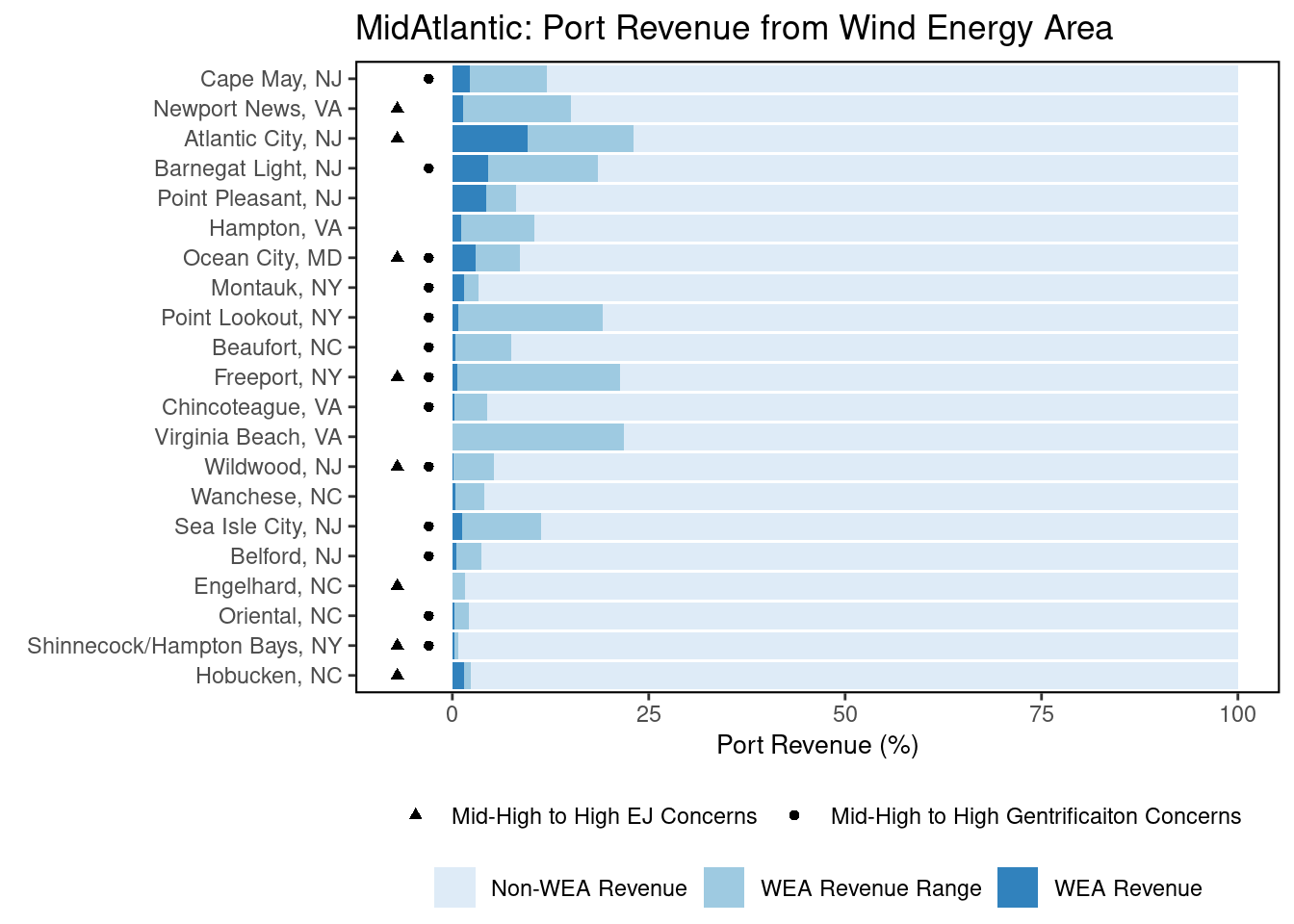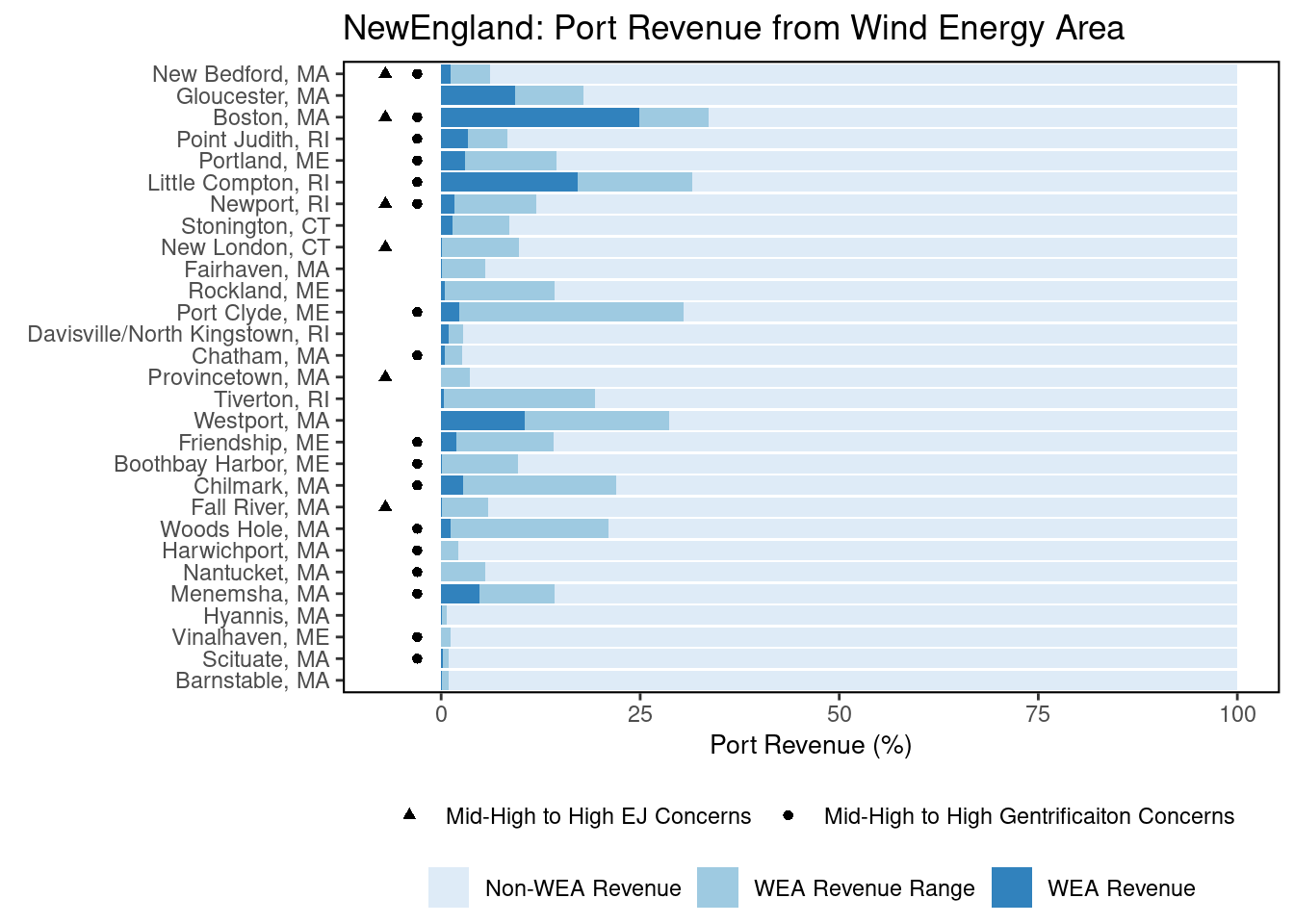77 Community Port Landings and Revenue from Wind Energy Areas (WEAs)
Description: NA
Indicator family:
Contributor(s): Angela Silva, Doug Christel
Affiliations: ?
77.2 Key Results and Visualizations
This figure links historic port revenue (2008-2022) from within all wind energy areas (including all lease areas, the Central Atlantic proposed lease areas A-2, B-1 and C-1, GOM Draft Wind Energy Area and secondary areas), as a proportion of a port’s total fisheries revenue based on vessel trip reports as described in the revenue and landings of species in the wind indicator above. The range (minimum and maximum) of total percent fisheries revenue from within wind energy areas is presented in the graph and ports are sorted from greatest to least fisheries revenue from within wind areas. Those communities that score Med-High or higher in at least one of the vulnerability indicators that address social vulnerability concerns (i.e., Poverty, Population Composition, Personal Disruption; see indicator definitions) are noted with a triangle. Gentrification pressure is also highlighted here, with those communities that score Med-High or higher in one or more gentrification pressure indicators (i.e., Housing Disruption, Retiree Migration, Urban Sprawl) represented with a circle.
77.3 Indicator statistics
Spatial scale: Full Shelf, broken down into Mid-Atlantic and New England communities
Temporal scale: 2008-2022
Synthesis Theme:
77.4 Implications
BOEM reports that cumulative offshore wind development (if all proposed projects are developed) could have moderate impacts on low-income members of socially vulnerable communities who work in the commercial fishing and for-hire fishing industry due to disruptions to fish populations, restrictions on navigation and increased vessel traffic as well as existing vulnerabilities of low-income workers to economic impacts [117]. impacts of offshore wind development may unevenly affect individual operators, with permit-based revenue being much higher than the port-based mean for some permit holders
77.5 Get the data
Point of contact: Angela Silva (angela.silva@noaa.gov)
ecodata name: ecodata::wind_port
Variable definitions
NA
Indicator Category:
77.7 Accessibility and Constraints
No response
tech-doc link https://noaa-edab.github.io/tech-doc/wind_port.html

